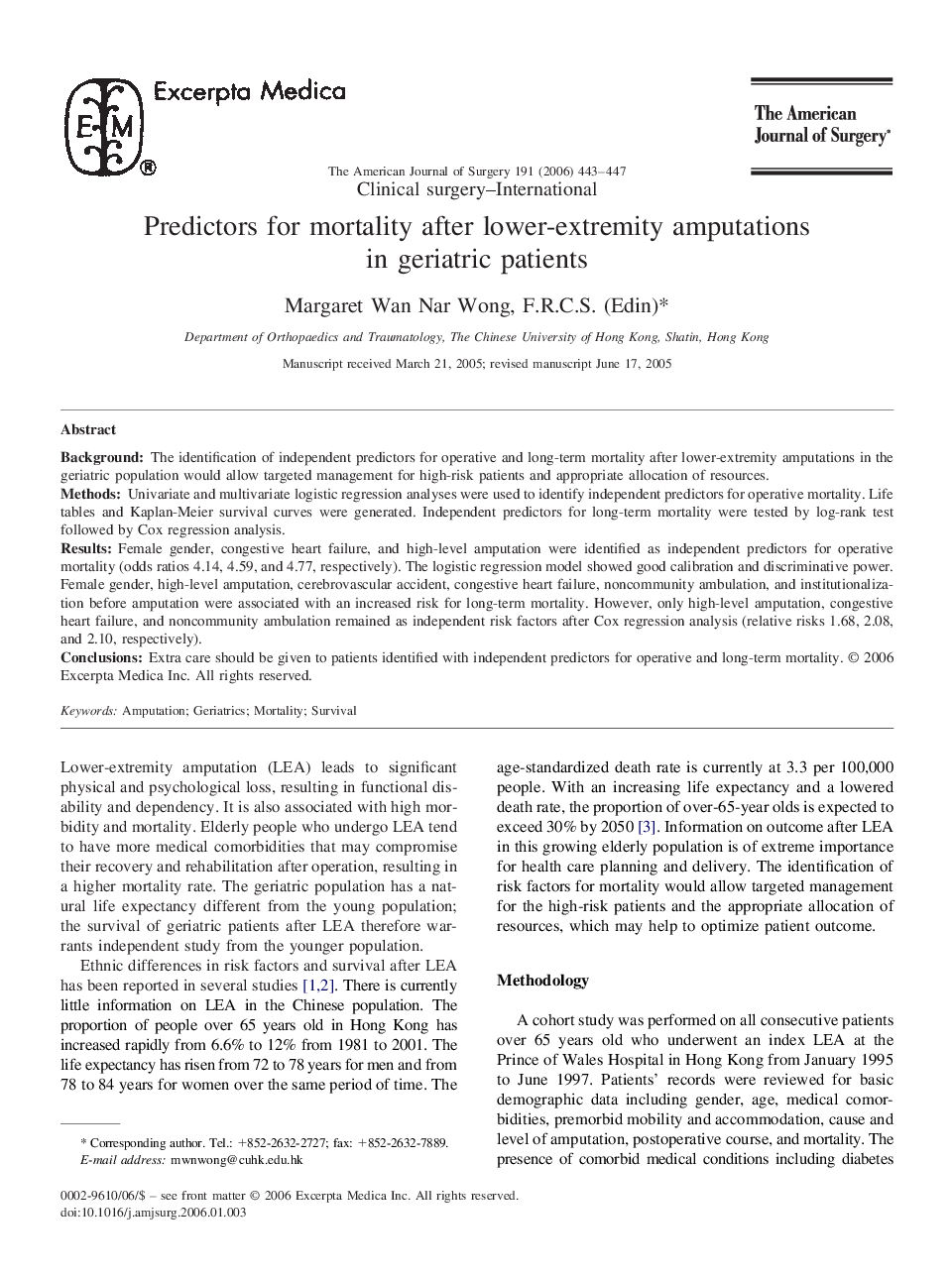| Article ID | Journal | Published Year | Pages | File Type |
|---|---|---|---|---|
| 4282232 | The American Journal of Surgery | 2006 | 5 Pages |
BackgroundThe identification of independent predictors for operative and long-term mortality after lower-extremity amputations in the geriatric population would allow targeted management for high-risk patients and appropriate allocation of resources.MethodsUnivariate and multivariate logistic regression analyses were used to identify independent predictors for operative mortality. Life tables and Kaplan-Meier survival curves were generated. Independent predictors for long-term mortality were tested by log-rank test followed by Cox regression analysis.ResultsFemale gender, congestive heart failure, and high-level amputation were identified as independent predictors for operative mortality (odds ratios 4.14, 4.59, and 4.77, respectively). The logistic regression model showed good calibration and discriminative power. Female gender, high-level amputation, cerebrovascular accident, congestive heart failure, noncommunity ambulation, and institutionalization before amputation were associated with an increased risk for long-term mortality. However, only high-level amputation, congestive heart failure, and noncommunity ambulation remained as independent risk factors after Cox regression analysis (relative risks 1.68, 2.08, and 2.10, respectively).ConclusionsExtra care should be given to patients identified with independent predictors for operative and long-term mortality.
